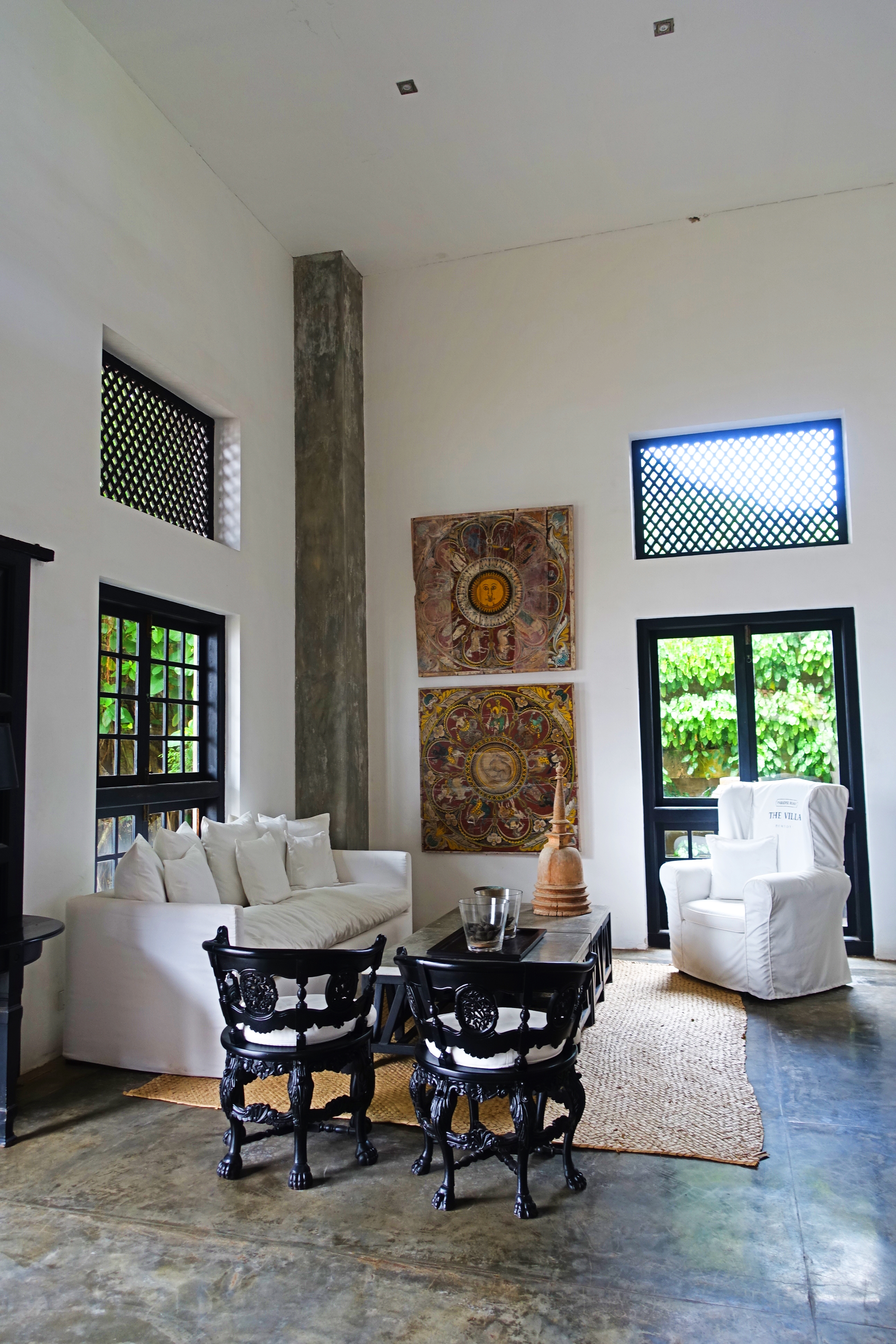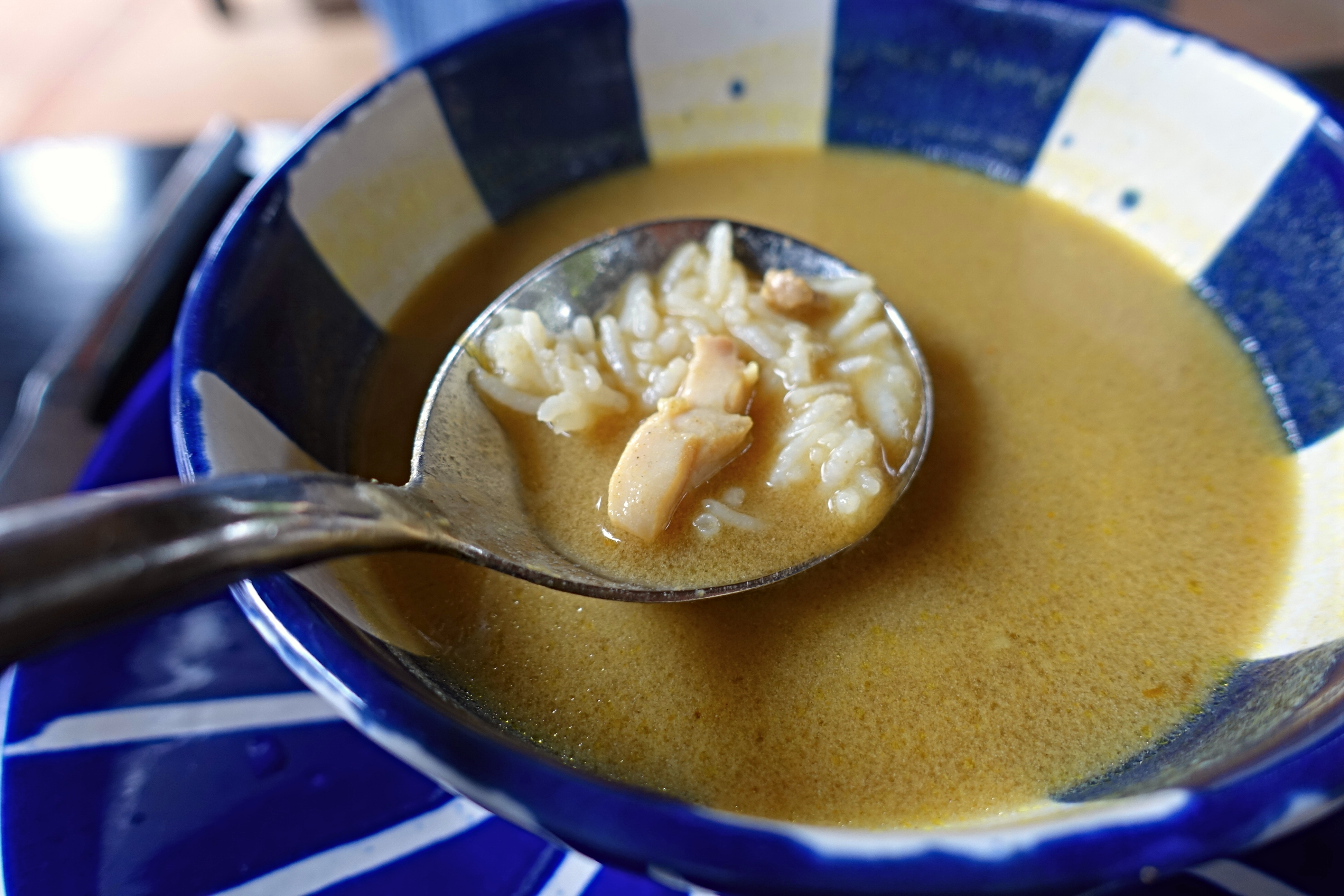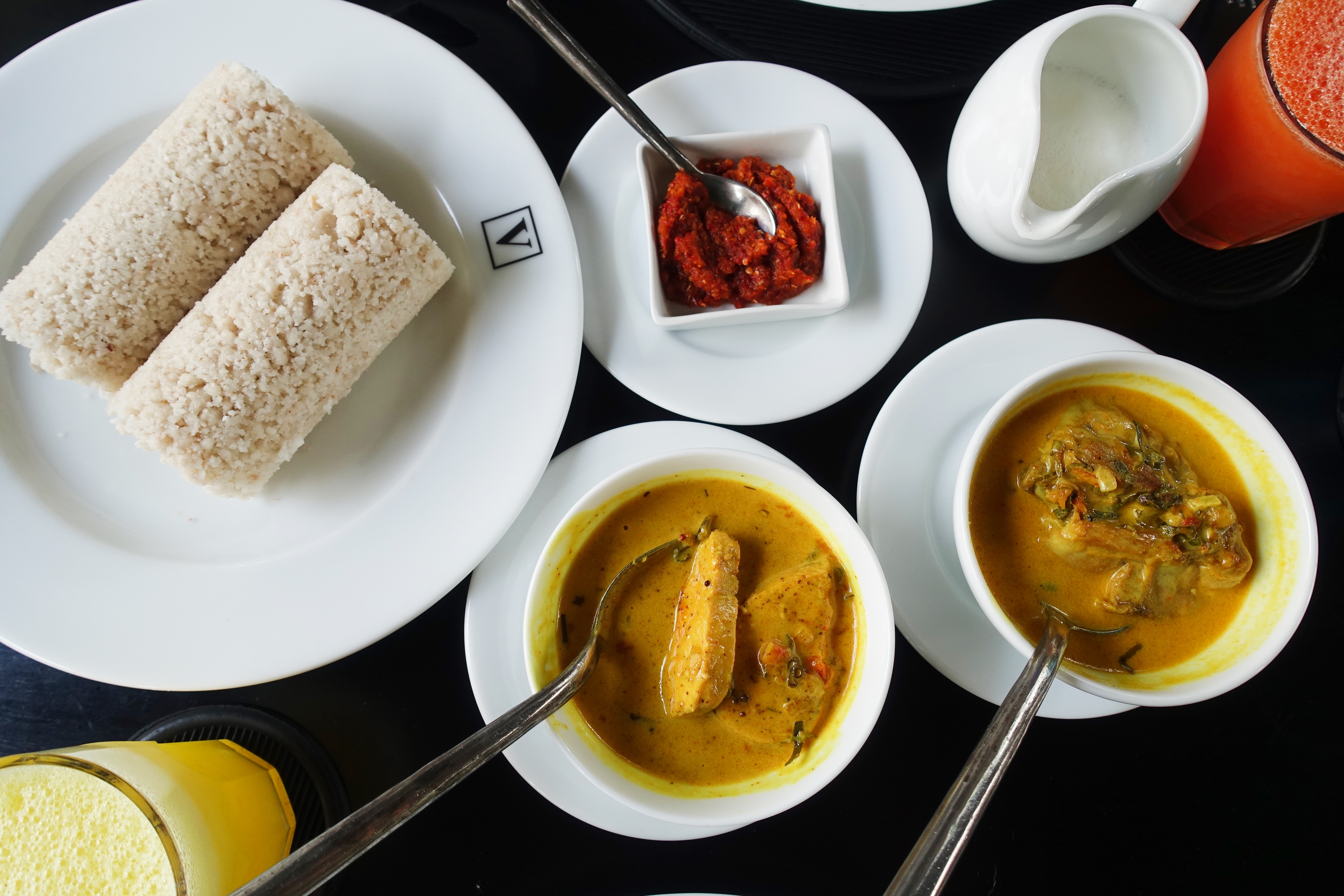One of my main objectives for visiting Sri Lanka recently was to visit the creations of Sri Lankan architect, Geoffrey Bawa, one of the pioneers of the “tropical modernism” style of architecture. A must-visit location if one goes to Sri Lanka has to be Geoffrey Bawa’s Lunuganga country estate - lush & beautiful, filled with artwork and artifacts which Bawa collected from all over the world.
Bentota town, where Lunuganga is located, is just over 80km (50 miles) south of Colombo, a bit under 2 hours’ drive. We decided to stay overnight in Bentota after our visit to Lunuganga. Our hotel of choice is Paradise Road the Villa Bentota, which was also designed by Geoffrey Bawa, and bore all his signature design characteristics: white-washed walls, beautiful columns, verandahs overlooking wide expanses of greenery, and a blend of European and Asian furniture.
Paradise Road The Villa Café serves a limited choice of either native Sri Lankan dishes, or else Italian pastas and pizzas (in keeping with Geoffrey Bawa’s love of Italy). The cafe’s decor bore all the hallmarks of Bawa’s design: an effortless blend of indoor and outdoor environments, and allowing seabreezes (the villa is by the Indian Ocean) to waft through.
Our lunch choices consisted of:
-
Mulligatawny soup, a classic British-Indian spiced soup with chicken and rice. The version here was both light and tasty, but with a rather saltier-than-expected edge which I was to find out in the coming days to be a characteristic of Sri Lankan cooking. But, for the moment, we really enjoyed the soup, dipping crusty French baguette slices into the soup to soak up the lovely flavours whilst allowing the bread to temper its saltiness.
-
Sri Lankan crab soup - this dish made good use of Sri Lankan crabs (those imported crustaceans were so popular in Singapore for our chili crab and black pepper crab dishes due to their meatiness and sweetness of the flesh). The soup here was gently spiced and laced with the barest hint of coconut milk, enough to give the soup a light, rich lift, and yet never cloying enough to overwhelm the natural sweetness of the crabmeat.
The Mains
3) Malu Hodhi (Sri Lankan fish curry) - this is a lovely turmeric-and-coconut milk-flavoured fish curry using tuna. Sri Lankan curries are pretty similar to South Indian/Keralan ones, but lighter - with less ghee and coconut milk.
- Uru Mas Kariya (Sri Lankan black pork curry) - a classic Sinhalese dish with spices and tamarind. The tamarind, when cooked, gave the dish its trademark black colour. Thick cuts of pork belly slices were used for this dish, and the fat from the pork gave the dish its juiciness.
Accompaniments
5) Parippu (yellow lentils/dhal curry) - this is a classic South Indian staple, done the same way here.
-
Wambatu moju (caramelised eggplant relish) - another dish which I think is unique to Sri Lankan cuisine, and perhaps my favourite among new dishes discovered here.
-
Pappadums
-
Mango chutney - this was very, very sweet. The Sri Lankans, like their South Indian brethren, had a sweet tooth.
It was a lovely lunch spread, served with rice, milk curds and grated coconut tossed with local herbs.
Desserts
9) Watalappam, which is the Sri Lankan counterpart of créme caramel, but uses coconut milk and jaggery sugar instead. Sri Lankans also liked to pair watalappam with cashewnuts for an additional textural crunch.
- Jaggery sundae with fairy floss topping - Jaggery is a local brown sugar made from a blend of sugarcane & toddy palm sap.
Beautiful cafe with well-prepared dishes.
Address
Paradise Road the Villa Bentota (Mohotti Walauwa)
138/18 - 138/22 Galle Road
Bentota, Sri Lanka
Tel: +94 342 275 311

































